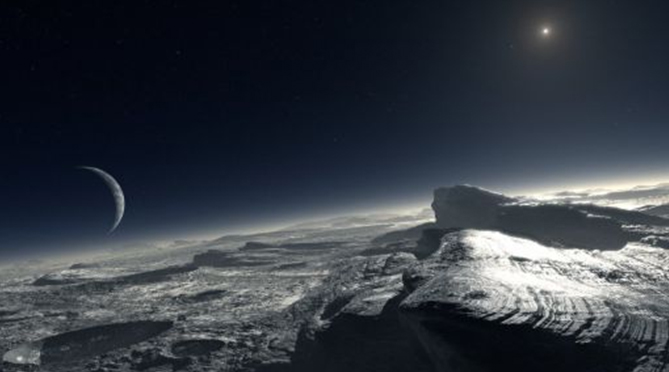Tonight the BBC finally broadcasted the first episode of a new documentary series, Space Odyssey, which had promised us a look at what a manned Grand Tour of the Solar System could be like and what wonders could be found on the way. The trailers had made it sound like the series would be equally about the technology behind the expedition and the planets the expedition would visit: Venus, Mars, Jupiter, Saturn and Pluto. S— wanted to see the latter most, I was hoping the former would be dominant; unfortunately we both were disappointed.
The actual series you see, is neither fish nor fowl: it’s part astronaut drama ala Apollo 13, part reality tv about five astronauts living together for six years and only part science documentary. The information about the visited planets is shoehorned in between shots of the astronauts adjusting to their circumstances and demonstrating zero-g and Tense, Dramatic Moments, with appropriate closeups of the people in Mission Control, of the expedition in Danger. Tension while contact is lost with the Venus lander! Excitement at a dust storm on Mars! More excitement at a very close approach of a binairy asteroid! And all with the obligatory, sweeping, over-intrusive violin music. It made S—wonder whether it was a PBS co-production, while I guessed it would be Discovery Channel; rightly as it turned out.
It certainly shares the flaws of other BBC/Discovery co-productions like The Future is Wild: good central concepts but bad execution, the emphasis on special effects and pretty pictures over science and imparting knowledge, the speculation presented as fact and the fact presented without a good context to make sense of it, but as trivia. And of course, the science errors.
Radio lag? Neither seen nor mentioned until the dramatic asteroid approach when suddenly the script requires a 38 minute lag; the previous tense moments were all witnessed live by Mission Control. Then there were the Venus and Mars landers, both of which looked roughly like souped up Moon landers. But the moon has an escape velocity of only 2.38 km/s, which can be reached even by a puny lander; for Mars, (5.027 km/s) and especially Venus (10.36 km/s) with an escape velocity not that much less than Earth’s, you need something more. You need the same sort of big fuckoff rocket on Venus that it takes to put two people into orbit on Earth, basically. Another thing that bothered me about the Venus sequence: the need for a tough astronaut suit was mentioned, to withstand the sheer pressure and noxious fumes there; so why the huge clear plastic faceplate?
Unfortunately, the technical realities behind the expedition, what it would take to actually do it in real life got even less mention than the planetary exploration. What I would’ve liked to see was an approach similar to that of The Blue Planet, where each program had two parts. With Blue Planet, you would first get the wonders and miracles of whatever part of the oceans it was this time, followed by an explenation of how these wonders and miracles were filmed and the technology and science behind it. That would’ve been much more interesting here too, especially if the programme’s makers hadn’t tried to cram everything into two episodes.
A failure then, but an interesting failure.
